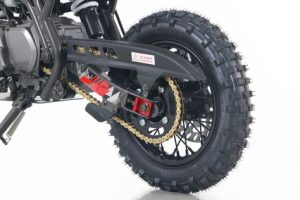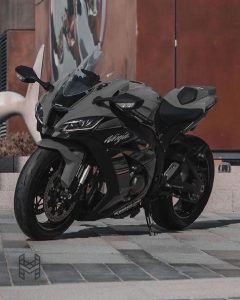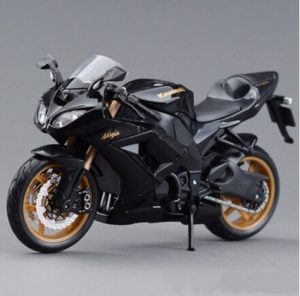May 16, 2024
What Kind of Motorcycle Should I Get
Picking your first motorcycle is an exciting moment! It’s a chance to explore freedom and adventure on two wheels. But with so many motorcycle styles to choose from, where do you begin? This comprehensive guide explores different motorcycle types, factors to consider when making your choice, and safety tips for new riders.
Exploring Motorcycle Styles
Motorcycles come in various styles, each with its own characteristics and riding experience. Here’s a breakdown of some popular categories:
Standard motorcycles:
These versatile bikes offer a comfortable riding position and balanced handling. They’re a great choice for beginners because they’re easy to learn on and maneuver.
Sportbikes:
Built for speed and agility, sportbikes feature a crouched riding position and powerful engines. They’re ideal for experienced riders who enjoy track riding or curvy roads.
Cruisers:
Known for their relaxed riding posture, low seat height, and powerful engines, cruisers offer a comfortable ride and a sense of style.
Touring motorcycles:
Designed for long-distance journeys, touring bikes prioritize comfort and practicality. They often come with features like windshields, saddlebags, and comfortable seats.
What kind of motorcycle should I get? Dual-sport motorcycles:
These versatile machines can handle both on-road and off-road riding. They’re a good choice for riders who want to explore dirt trails and gravel roads.

Consider Your Riding Style
Before diving into specific models, consider how you plan to use your motorcycle:
-
Commuting: If you’ll be riding to work daily, prioritize a fuel-efficient and maneuverable bike.
-
Cruising: For weekend rides and enjoying the scenery, comfort and ergonomics are key.
-
Sport riding: If you crave adrenaline-filled adventures, a sportbike might be ideal.
-
Off-road riding: If you enjoy exploring dirt trails, a dual-sport motorcycle is a must.
Important Factors for New Riders
As a new rider, safety should be your top priority. Here are some factors to consider when choosing your first motorcycle:
-
Engine size: A smaller engine is easier to handle for beginners. Start with a motorcycle with an engine size that aligns with your experience level.
-
Weight: A lighter motorcycle is easier to maneuver and control, especially at slower speeds.
-
Seat height: Choose a motorcycle with a seat height that allows you to comfortably place both feet flat on the ground. This is important for balance and control when stopped.
-
Braking system: Anti-lock braking systems (ABS) can help prevent wheel lockup during hard braking, especially on slippery surfaces. Look for a motorcycle with ABS if possible.

Getting Gear and Safety Training
Safe riding gear is essential for any motorcyclist. Here are some key items to invest in:
-
Helmet: Choose a Department of Transportation (DOT)-approved helmet that fits snugly and comfortably.
-
Eye protection: A full-face helmet with a visor or protective goggles shield your eyes from wind, debris, and insects.
-
Jacket: A leather or textile jacket offers protection in case of a slide or fall.
-
Pants: Leather or abrasion-resistant pants protect your legs.
-
Gloves: Leather gloves protect your hands in a crash and improve your grip on the handlebars.
-
Boots: Sturdy boots with good ankle protection are essential.
In addition to gear, enrolling in a motorcycle safety course can significantly improve your riding skills and knowledge.
Enjoying the Ride Responsibly
Once you’ve chosen your motorcycle and geared up properly, it’s time to hit the road! Here are some safety tips for new riders:
-
Start slow and practice in a safe environment away from traffic until you become comfortable with the motorcycle’s handling and controls.
-
Obey traffic laws and avoid speeding or reckless riding.
-
Always wear your motorcycle safety gear every time you ride.
-
Be aware of your surroundings and watch out for other vehicles and road hazards.
-
Ride within your limits and avoid maneuvers you’re not comfortable with.
-
Never ride under the influence of alcohol or drugs.
By following these tips and choosing a motorcycle that suits your experience and riding style, you can ensure a safe and enjoyable riding experience.

Getting Your Motorcycle License (Focus on this section)
Before you jump into choosing a specific motorcycle, it’s important to get your motorcycle license. The process typically involves written and practical skills tests.
-
License requirements vary by region. Check your local Department of Motor Vehicles (DMV) website for details on your area’s licensing process and any required safety courses.
-
Many regions offer motorcycle safety courses. These courses teach essential skills for safe riding and can potentially reduce licensing costs.
Getting your motorcycle license is a great first step towards safe and responsible motorcycling. Once you’ve got your license, you’ll be in a better position to choose the motorcycle that’s right for you!
Different Motorcycle Styles (continued from previous section)
In the previous section, we began exploring different motorcycle styles. Here are some additional details on popular categories:
-
Naked bikes: Similar to sportbikes but with more upright handlebars, naked bikes offer a balance of performance and comfort.
-
Scooters: Small, automatic motorcycles with under-seat storage, scooters are a practical choice for commuting and around-town riding.
-
Adventure motorcycles: Designed for long-distance travel on and off-road, adventure bikes are built for durability and comfort.
Remember, this is not an exhaustive list. There are many other motorcycle styles and subcategories to explore.
Once you have your license, researching specific models within these categories will help you find the perfect motorcycle for your needs and preferences.

Researching Specific Motorcycles
Once you have your license and a better understanding of motorcycle styles, you can delve into researching specific models. Here are some tips:
-
Motorcycle review websites and magazines offer detailed information on various motorcycles, including performance specs, handling characteristics, and ownership experiences.
-
Online forums allow you to connect with other motorcycle riders and get their insights on different models.
-
Motorcycle dealerships have salespeople who can answer your questions and let you test ride some motorcycles (with a valid motorcycle license).
Test riding is crucial. It’s the best way to get a feel for a motorcycle’s size, weight, handling, and overall comfort. Look for dealerships that offer test rides for beginners.
Additional Considerations
Here are some other factors to keep in mind as you narrow down your choices:
-
Budget: Motorcycles range in price from a few thousand dollars to well over twenty thousand. Determine your budget before you start shopping.
-
Maintenance: Consider the ongoing maintenance costs associated with different motorcycles. Some require more frequent or expensive maintenance than others.
-
Availability: The availability of certain models can vary depending on your location. Check with dealerships in your area to see what they have in stock.
